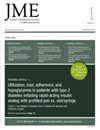荷兰肺癌筛查计划的成本效益分析:基于 NELSON 和 NLST 研究结果的模拟。
IF 2.9
4区 医学
Q2 HEALTH CARE SCIENCES & SERVICES
引用次数: 0
摘要
背景在荷兰,肺癌是导致癌症相关死亡的主要原因,每年死亡人数超过 10,000 人。使用低剂量计算机断层扫描(LDCT)进行的肺癌筛查(LCS)研究表明,早期检测可降低肺癌死亡率。然而,荷兰尚未实施肺癌筛查计划。本研究根据荷兰国家肺癌筛查试验(NLST)和荷兰国家肺癌筛查试验(NELSON)的数据,通过模拟筛查结果,评估了荷兰肺癌筛查与不筛查相比的成本效益。我们使用相关研究的纳入标准模拟了 74 岁以下人群的年度筛查。我们使用决策树和马尔可夫模型来预测筛查人群的增量成本、质量调整生命年 (QALY) 和增量成本效益比 (ICER)。结果与不进行筛查相比,LCS 在 NELSON 模拟中的 ICER 为 5,169 欧元/质量调整生命年,在 NLST 模拟中的 ICER 为 17,119 欧元/质量调整生命年。筛查成本对成本效益的影响很大。影响最大的参数是 CT 扫描成本。根据 NELSON 标准,将 CT 扫描费用从每次 201 欧元降至 101 欧元,可将 ICER 降至 2,335 欧元。此外,在 NELSON 和 NLST 模拟中,LCS 可分别预防 15,115 和 12,611 例肺癌过早死亡,每个肺癌病例可分别获得 1.66 和 1.31 QALY。根据 NELSON 标准,每 QALY 的花费低于 5,500 欧元。降低每次 CT 检查的成本将进一步减少这一数额。本文章由计算机程序翻译,如有差异,请以英文原文为准。
Cost-effectiveness analysis of a lung cancer screening program in the netherlands: a simulation based on NELSON and NLST study outcomes.
BACKGROUND
In the Netherlands, lung cancer is the leading cause of cancer-related death, accounting for more than 10,000 annual deaths. Lung cancer screening (LCS) studies using low-dose computed tomography (LDCT) have demonstrated that early detection reduces lung cancer mortality. However, no LCS program has been implemented yet in the Netherlands. A national LCS program has the potential to enhance the health outcomes for lung cancer patients in the Netherlands.
OBJECTIVE AND METHODS
This study evaluates the cost-effectiveness of LCS compared to no-screening in the Netherlands, by simulating the screening outcomes based on data from NEderlands-Leuvens Longkanker Screenings ONderzoek (NELSON) and National Lung Screening Trial (NLST). We simulated annual screening up to 74 years of age, using inclusion criteria from the respective studies. A decision tree and Markov model was used to predict the incremental costs, quality-adjusted life-years (QALYs), and incremental cost-effectiveness ratio (ICERs) for the screening population. The analysis used a lifetime horizon and a societal perspective.
RESULTS
Compared to no-screening, LCS resulted in an ICER of €5,169 per QALY for the NELSON simulation, and an ICER of €17,119 per QALY for the NLST simulation. The screening costs were highly impactful for the cost-effectiveness. The most influential parameter was the CT scan cost. Cost reduction for CT from €201 to €101 per scan would reduce the ICER to €2,335 using NELSON criteria. Additionally, LCS could prevent 15,115 and 12,611 premature lung cancer deaths, accompanied by 1.66 and 1.31 QALYs gained per lung cancer case for the NELSON and NLST simulations, respectively.
CONCLUSION
LCS was estimated to be cost-effective in the Netherlands for both simulations at a willingness-to-pay threshold of €20,000 per QALY. Using the NELSON criteria, less than €5,500 per QALY had to be spent. Lowering the cost per CT exam would lead to a further reduction of this amount.
求助全文
通过发布文献求助,成功后即可免费获取论文全文。
去求助
来源期刊

Journal of Medical Economics
HEALTH CARE SCIENCES & SERVICES-MEDICINE, GENERAL & INTERNAL
CiteScore
4.50
自引率
4.20%
发文量
122
期刊介绍:
Journal of Medical Economics'' mission is to provide ethical, unbiased and rapid publication of quality content that is validated by rigorous peer review. The aim of Journal of Medical Economics is to serve the information needs of the pharmacoeconomics and healthcare research community, to help translate research advances into patient care and be a leader in transparency/disclosure by facilitating a collaborative and honest approach to publication.
Journal of Medical Economics publishes high-quality economic assessments of novel therapeutic and device interventions for an international audience
 求助内容:
求助内容: 应助结果提醒方式:
应助结果提醒方式:


